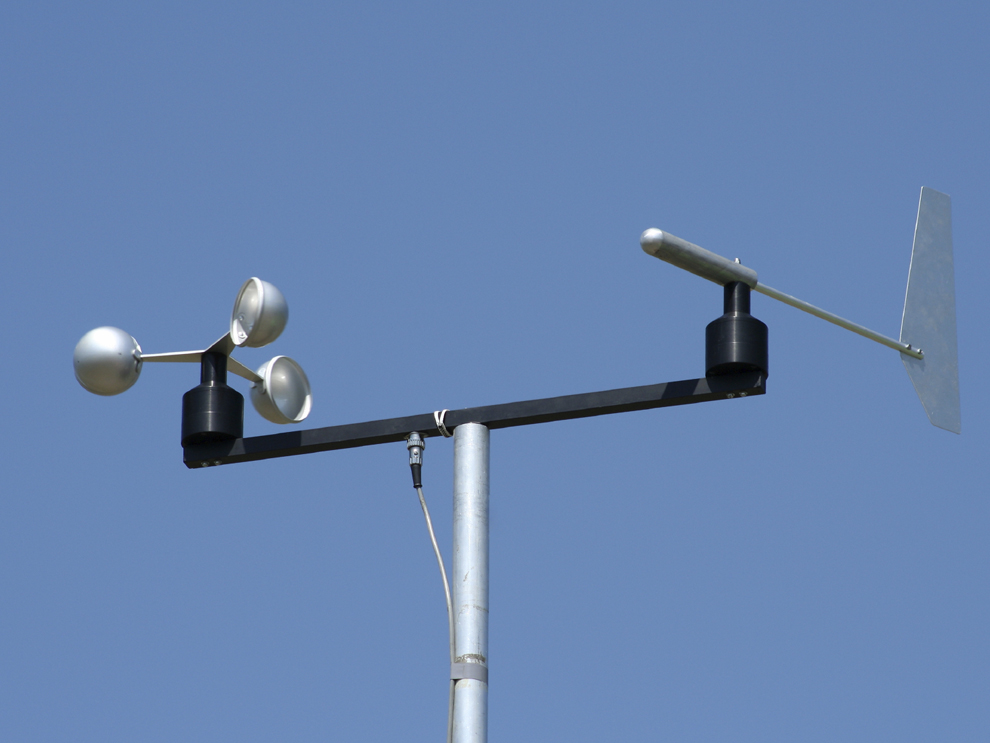Comprehending Various Kinds Of Anemometers for Various Applications
Checking Out the Features and Benefits of Anemometers for Weather Enthusiasts and Specialists
Anemometers stand as important tools in the realm of weather condition tracking, accommodating both enthusiasts and seasoned professionals alike. These devices offer a window into the dynamic globe of wind patterns and rates, providing vital information for atmospheric evaluation and forecasting. From cup anemometers to sonic anemometers, each type brings its one-of-a-kind collection of applications and advantages, dropping light on various aspects of atmospheric problems. As we explore the features and benefits of anemometers, a deeper understanding arises not just of prevailing weather condition phenomena however additionally of the wider ramifications for markets like wind energy manufacturing and environmental research study.
Relevance of Anemometers in Climate Surveillance
Anemometers play a critical duty in climate monitoring by providing precise dimensions of wind rate, aiding in projecting and understanding climate patterns. These tools, varying from conventional cup anemometers to modern-day ultrasonic anemometers, are crucial for meteorologists, scientists, and weather fanatics alike.
:max_bytes(150000):strip_icc()/GettyImages-186864034-58e3355e5f9b58ef7e576b44.jpg)
Kinds of Anemometers and Their Applications
With the vital role anemometers play in weather condition monitoring and projecting, understanding the various kinds of these tools and their applications comes to be crucial for specialists and fanatics in the area. One of the most usual sorts of anemometers consist of mug anemometers, vane anemometers, hot-wire anemometers, and ultrasonic anemometers. Cup anemometers contain three or 4 mugs installed on horizontal arms that revolve with the wind, gauging its rate. Vane anemometers, on the other hand, utilize an easily revolving vane to line up with the wind direction, supplying both wind rate and direction measurements. Hot-wire anemometers run based upon the principle of convective warmth transfer, where the cooling impact of the air flow is gauged to establish wind rate. Ultrasonic anemometers utilize ultrasonic noise waves to determine wind speed and direction accurately.
Cup anemometers are suitable and robust for general weather monitoring, while vane anemometers are preferred for directional measurements. Ultrasonic anemometers are non-intrusive and provide high precision, usually utilized in research study and specialized climate tracking applications.
Benefits of Utilizing Anemometers in Forecasting
In weather forecasting, the application of anemometers supplies vital advantages for enhancing the accuracy of weather forecasting. Anemometers determine wind rate and instructions, providing important data for predicting weather patterns. By incorporating wind information right into projecting models, meteorologists can better comprehend the motion of weather condition systems, anticipate changes in weather, and concern extra specific projections.
Additionally, anemometers play a crucial function in evaluating potential climate threats. Checking wind rates assists forecasters predict extreme climate events such as typhoons, tornadoes, and winter months tornados with higher accuracy. This very early warning system enables authorities to issue timely alerts and implement essential precaution, lowering the dangers to life and residential or commercial property.
Additionally, anemometers help in enhancing renewable resource manufacturing. By analyzing wind patterns, meteorologists can recognize ideal places for wind farms and anticipate power result, contributing to the efficient generation of wind power.

Anemometers in Wind Energy Production
Provided the essential role anemometers play in giving accurate wind data for weather condition projecting and hazard assessment, their relevance includes the realm of wind energy production. Anemometers check that are necessary tools in the field of wind energy, where the measurement of wind speed and instructions is vital for determining the feasibility and effectiveness of wind generator installments. By accurately published here gauging wind speeds at differing heights, anemometers assist optimize the placement and style of wind generators to optimize energy outcome.
In wind farms, anemometers are purposefully positioned to collect real-time wind data that is used to examine the prospective energy manufacturing of a site. navigate to this site This data contributes in establishing the economic feasibility of wind power jobs and in forecasting energy generation to ensure grid stability. In addition, anemometers help in monitoring wind problems to maximize generator performance, avoid damage from high winds, and ensure the safety of employees functioning in the location of wind generators.
Enhancing Climate Comprehending With Anemometers

Anemometers play an essential function in improving our understanding of microclimates. These local climate condition can differ dramatically from more comprehensive local projections, making it crucial to have exact information for certain locations. anemometer. By purposefully putting anemometers in numerous areas, scientists can gather thorough info on just how wind behaves in various surfaces, metropolitan atmospheres, or bodies of water
Additionally, anemometers add to enhancing weather forecasting versions by supplying real-time data on wind behavior. This information is specifically useful for anticipating serious weather occasions, enhancing agricultural practices, and sustaining markets like air travel and maritime navigation. Overall, anemometers are important tools that allow us to dig deeper right into the intricacies of weather condition systems, ultimately bring about even more precise predictions and better-informed choices.
Verdict
In verdict, anemometers play an essential role in climate tracking and projecting by gauging wind speed and instructions. They are essential devices made use of by climate fanatics and experts to gather accurate information for forecasting climate patterns and analyzing possible effects. Anemometers additionally have applications in wind power manufacturing, additional highlighting their relevance in both weather forecasting and renewable resource markets. In general, anemometers add to boosting our understanding of weather condition sensations and enhancing projecting abilities. anemometer.
From mug anemometers to sonic anemometers, each type brings its distinct collection of benefits and applications, losing light on numerous facets of climatic problems. These instruments, varying from conventional cup anemometers to modern-day ultrasonic anemometers, are crucial for meteorologists, researchers, and climate lovers alike. The most common kinds of anemometers include cup anemometers, vane anemometers, hot-wire anemometers, and ultrasonic anemometers. Mug anemometers are ideal and robust for basic climate tracking, while vane anemometers are favored for directional dimensions. Anemometers are essential instruments in the area of wind energy, where the measurement of wind speed and instructions is critical for establishing the feasibility and effectiveness of wind generator installations.